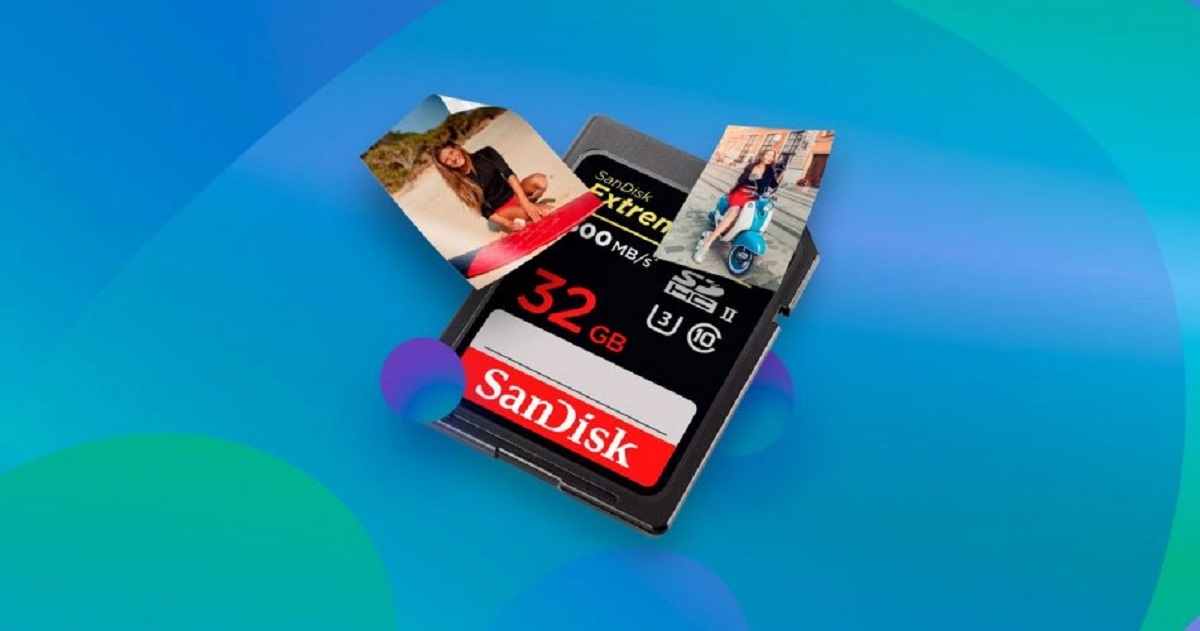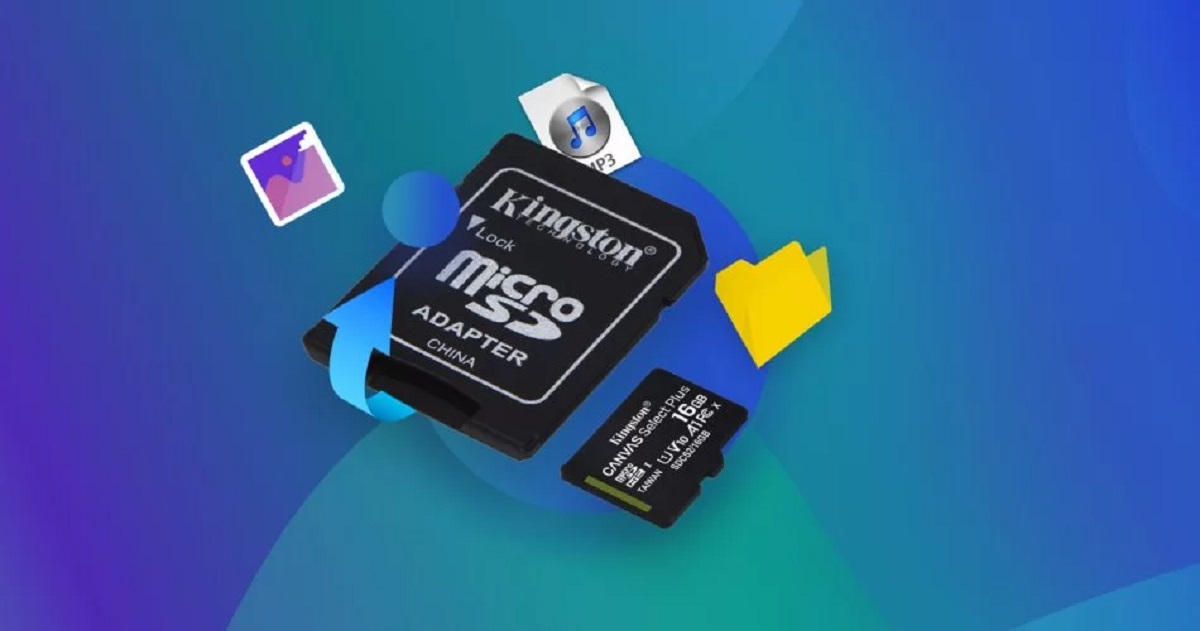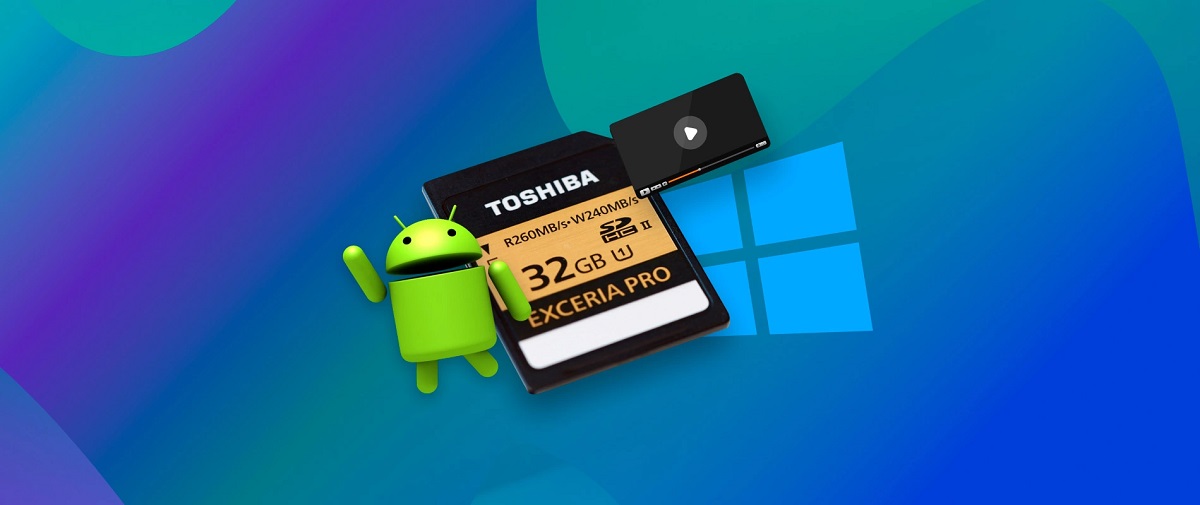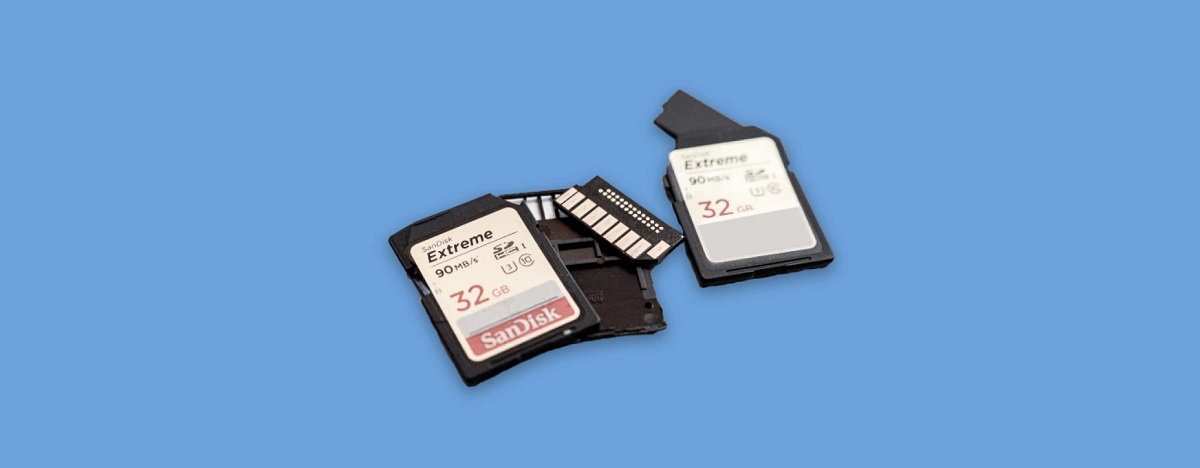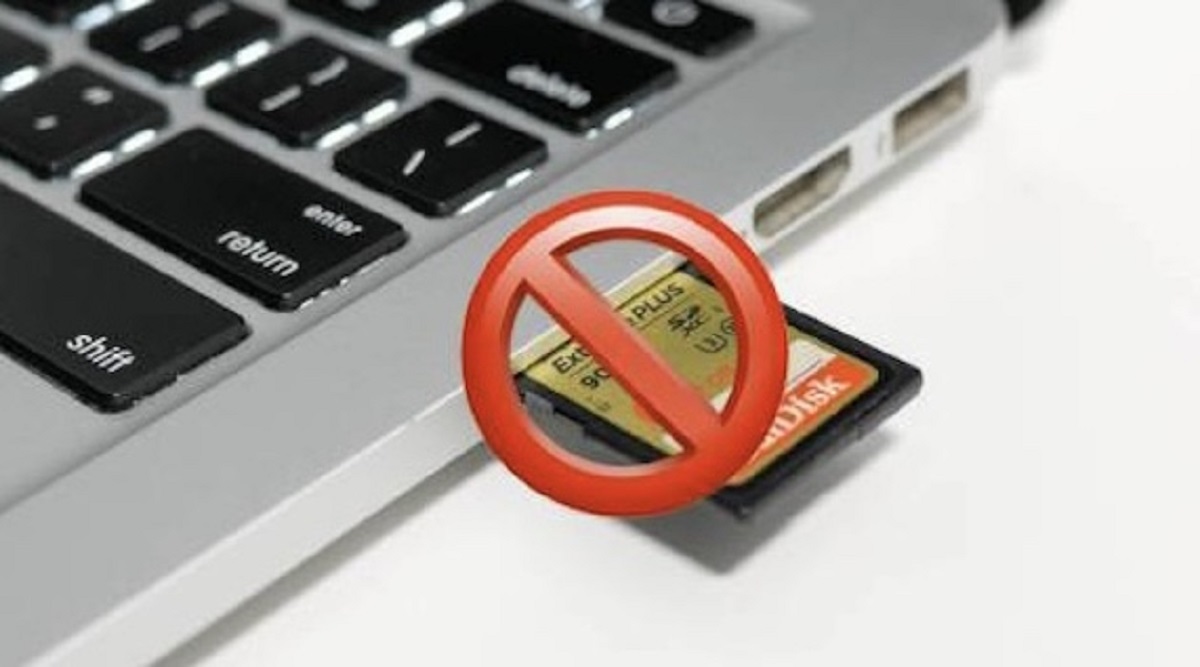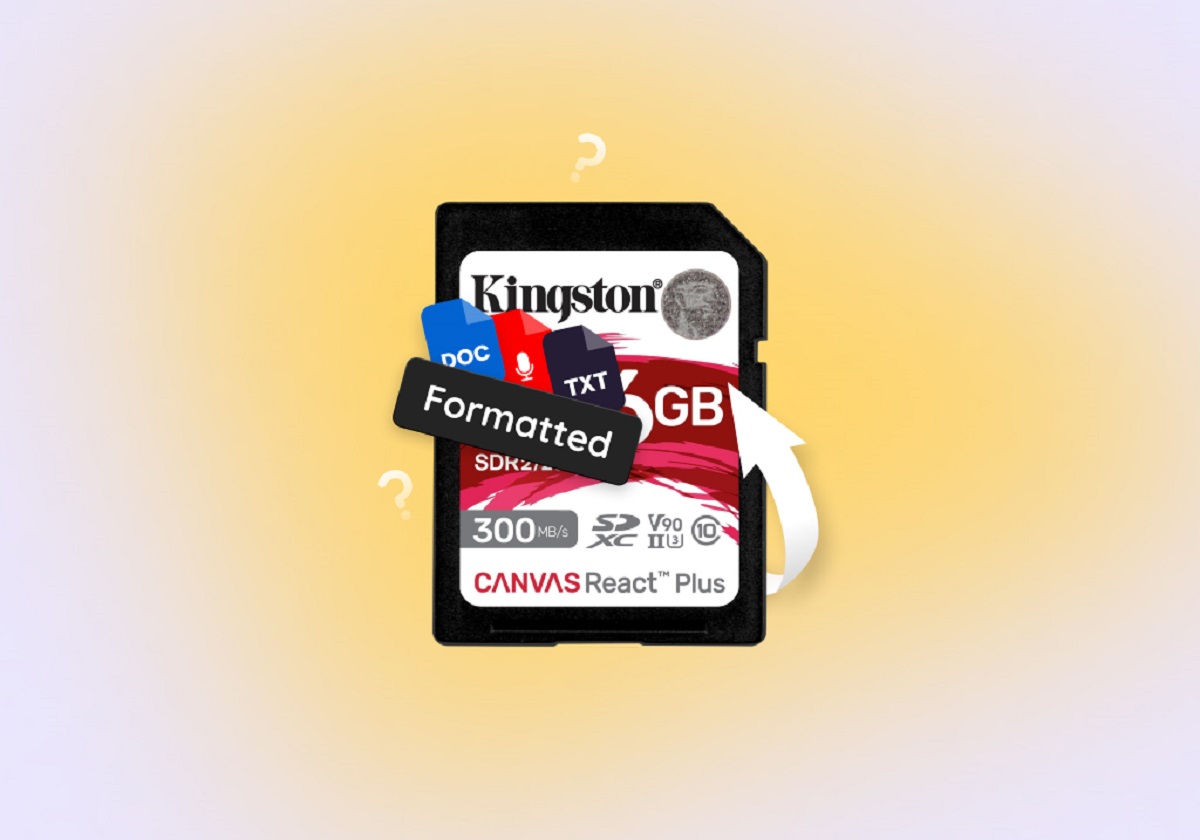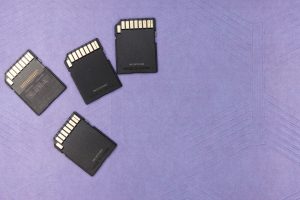Introduction
Welcome to the ultimate guide on how to recover deleted files from an SD card. In today’s digital age, most of our important files and memories are stored on various electronic devices, including SD cards. These small, portable storage devices are widely used in smartphones, digital cameras, and other devices to store photos, videos, documents, and more.
Unfortunately, accidents can happen, and files may be accidentally deleted or lost from an SD card. This can be a frustrating experience, especially if the deleted files were crucial or contained valuable memories. However, the good news is that in most cases, it is possible to recover those deleted files and restore them back to your SD card.
In this guide, we will walk you through different methods and techniques to recover your deleted files from an SD card. Whether you mistakenly deleted files, formatted your SD card, or experienced a card corruption issue, we have got you covered. We will explore both manual methods and software solutions to help you retrieve your lost data efficiently.
Before we delve into the recovery process, it’s important to note that the success of file recovery depends on various factors, including how long ago the files were deleted, the extent of card damage, and whether new data has overwritten the deleted files. Therefore, it is crucial to act quickly once you realize that you have lost important files so that you can increase your chances of successful recovery.
Throughout this guide, we will provide step-by-step instructions, tips, and insights to guide you through the recovery process. It’s important to note that each method discussed here has its own advantages and limitations. Therefore, we recommend trying multiple approaches to maximize your chances of successful file recovery.
Whether you are a concerned individual looking to retrieve valuable personal files or a professional photographer needing to recover precious images, this guide is for you. With the right knowledge and tools, you can regain access to your deleted files and avoid the heartache of permanent loss.
Understanding SD Card Deletion
Before we dive into the various methods of recovering deleted files from an SD card, it’s crucial to understand how deletion works and the implications it has on data recovery. When you delete a file from an SD card, it’s important to note that the file itself is not immediately removed from the card. Instead, the space it occupies is marked as available for reuse, which means that the file is technically still present on the card until new data overwrites it.
This distinction is essential because it highlights the time-sensitive nature of SD card data recovery. The sooner you realize that files have been deleted and take action to recover them, the higher the chances of successful retrieval. This is because the longer you wait and continue to use the SD card, the more likely it is that the deleted files will be overwritten by new data, rendering them permanently irretrievable.
Another vital aspect to consider is the difference between logical deletion and physical damage to the SD card. Logical deletion refers to the deletion of files caused by manual actions or software-related issues like formatting or accidental deletion. In most cases, logical deletion can be reversed, and the files can be recovered using appropriate techniques and tools.
On the other hand, physical damage can occur due to factors like water damage, extreme heat, or physical impact. When an SD card is physically damaged, it can lead to a loss of data that may be difficult or impossible to recover. In such cases, professional data recovery services may be required, but these services can be costly and time-consuming.
It’s crucial to assess the nature of the issue you are facing with your SD card. If the issue is related to logical deletion or software-related problems, the methods discussed in this guide should help you recover your files. However, if you suspect physical damage, it is advisable to consult a professional data recovery service to avoid further damage to the card or loss of data.
Now that we have a better understanding of how SD card deletion works and the importance of acting quickly, let’s move on to the precautions you should take before attempting any file recovery methods.
Precautions to Take Before Recovery
Before you begin the process of recovering deleted files from your SD card, it’s essential to take some precautions to maximize your chances of successful recovery. These precautions will help prevent further data loss and ensure that you can retrieve your files effectively. Here are some key precautions to keep in mind:
- Stop using the SD card: As soon as you realize that files have been deleted or lost, it’s crucial to stop using the SD card immediately. Continuing to use the card can overwrite the deleted files, making them permanently irretrievable. Remove the SD card from your device and keep it safe until you’re ready to initiate the recovery process.
- Avoid formatting the SD card: Formatting the SD card is a common mistake that users make when they encounter data loss. Formatting will erase all the data on the card, making it extremely difficult or impossible to recover the deleted files. Therefore, make sure to avoid formatting the SD card before attempting any recovery methods.
- Create a backup: If you have a backup of your SD card data, it can greatly simplify the recovery process. Regularly backing up your important files is a best practice that everyone should follow to prevent data loss. If you have a backup, restore the files from the backup to your SD card instead of going through the recovery process.
- Use a card reader: To ensure the safety of your SD card and the recovered files, it’s recommended to use a card reader instead of directly connecting your device to a computer. Using a card reader reduces the risk of accidental damage to the card or its contents. Make sure to use a reliable and compatible card reader for the best results.
- Choose the right recovery method: Depending on the nature of the deletion and the state of your SD card, different recovery methods may yield different results. It’s important to choose the appropriate method based on your specific situation. This guide will explore various recovery methods, including using the recycle bin, utilizing backup files, and employing data recovery software. Assess your requirements and select the most suitable method accordingly.
- Protect your recovered files: Once you have successfully recovered your deleted files, it’s crucial to protect them to prevent future data loss. Make sure to save the recovered files to a different location rather than directly on the SD card. This will help avoid accidental deletion or overwriting of the recovered data.
By following these precautions, you can minimize the risk of further data loss and increase your chances of successfully recovering deleted files from your SD card. Now that you are aware of the necessary precautions, let’s explore the different methods you can use to recover your deleted files.
Method 1: Using Recycle Bin
If you have accidentally deleted files from your SD card, one of the first places to check is the Recycle Bin. Just like the recycling bin on your computer, the Recycle Bin on your device acts as a temporary storage for deleted files before they are permanently erased. Here’s how you can use the Recycle Bin to recover deleted files from your SD card:
- Connect your SD card: Insert the SD card into your computer using a card reader. Ensure that the card is recognized and accessible by your operating system.
- Open the Recycle Bin: On your computer, locate the Recycle Bin icon on your desktop or open it through your file explorer. Double-click on the Recycle Bin icon to open it.
- Search for deleted files: In the Recycle Bin, you will find a list of deleted files. Scroll through the list or use the search bar to locate the files that you want to recover.
- Select files to restore: Once you have found the deleted files, select them by clicking on each file while holding down the Ctrl key. Alternatively, you can use the Ctrl+A shortcut to select all the files in the Recycle Bin.
- Restore the selected files: Right-click on the selected files and choose the “Restore” option. This will restore the files to their original location. If the files were deleted from your SD card, they will be restored to the SD card itself.
- Verify file recovery: After restoring the files, navigate to the original location on your SD card and confirm that the deleted files have been successfully recovered. You should now be able to access and use the recovered files as before.
It’s important to note that the Recycle Bin method is only applicable if your deleted files were stored on the SD card and not permanently deleted from the Recycle Bin. If the files were deleted using the “Shift+Delete” function or if the Recycle Bin was emptied, this method may not yield any results.
If you could not find your deleted files in the Recycle Bin or if they have already been permanently deleted, do not worry. There are still other methods you can try to recover your deleted files, including utilizing backup files and employing data recovery software. Stay tuned for the next sections where we will explore these methods in detail.
Method 2: Utilizing Backup Files
If you have the habit of regularly backing up your SD card data, utilizing your backup files can be an effective method to recover deleted files. Backups are copies of your important files that are created and stored separately, providing a safety net in case of data loss. Here’s how you can use your backup files to recover deleted data from your SD card:
- Identify your backup source: Determine where your backup files are stored. This could be an external hard drive, a cloud storage service, or another device where you regularly save copies of your SD card data.
- Connect the backup source: If your backup files are stored on an external device such as an external hard drive, connect it to your computer using the appropriate cable or adapter. If your backup files are stored in the cloud, ensure that you have a stable internet connection.
- Access your backup files: Navigate to the location of your backup files. If the files are on an external device, open the file explorer and locate the connected device. If the files are in the cloud, log in to your cloud storage account and access the backup files from there.
- Locate the deleted files: Once you have accessed your backup files, browse through the folders to find the deleted files that you want to recover. If you have organized your backup files into specific folders, it will be easier to locate the desired files.
- Restore the deleted files: Select the deleted files that you want to recover and copy them to a different location on your computer. It is advisable to avoid directly copying the files to the SD card at this stage to prevent overwriting any potential deleted files that might still be recoverable.
- Transfer the restored files to the SD card: After successfully restoring the deleted files to your computer, insert the SD card into your computer using a card reader. Copy the restored files from your computer to the desired location on the SD card.
- Verify file recovery: Safely remove the SD card from your computer and insert it back into your device. Navigate to the location where you copied the restored files and confirm that the deleted files have been successfully recovered. You should now be able to access and use the recovered files on your SD card.
Utilizing backup files is an excellent recovery method if you have been diligent in creating backups of your SD card data. Regularly backing up your files ensures that you have a secondary copy that can be used for recovery purposes. However, if you don’t have a backup or if your backup files are outdated, don’t worry. There are still other methods you can try to recover your deleted files, such as employing data recovery software. Stay tuned for the next section where we will explore this method in detail.
Method 3: Employing Data Recovery Software
If the previous methods did not yield the desired results or if you do not have backup files to rely on, employing data recovery software can be an effective way to recover deleted files from your SD card. Data recovery software is specifically designed to scan storage devices, locate deleted or lost files, and provide a means to recover them. Here’s how you can use data recovery software to recover files from your SD card:
- Select a reliable data recovery software: Research and choose a reputable data recovery software that suits your needs. There are various options available, both free and paid. Be sure to select software that supports SD card recovery and has positive user reviews.
- Download and install the software: Visit the official website of the chosen data recovery software and download the installation file. Follow the on-screen instructions to install the software on your computer.
- Connect your SD card: Insert the SD card into your computer using a card reader. Ensure that the card is recognized and accessible by your operating system.
- Launch the data recovery software: Open the data recovery software that you installed and launch it on your computer. The software should detect and display the connected SD card as a selectable storage device.
- Scan the SD card: Start the scanning process by selecting the connected SD card as the target device. Choose the appropriate scan option based on your needs – quick scan or deep scan. The scanning process may take some time, depending on the size of the SD card and the amount of data stored on it.
- Preview and recover the deleted files: Once the scanning process is complete, the software will display a list of recoverable files. Preview the recovered files to ensure they are the ones you want to recover. Select the desired files and choose the option to recover them. It is recommended to recover the files to a location other than the SD card to prevent overwriting.
- Transfer the recovered files to the SD card: After successfully recovering the deleted files and saving them to a different location on your computer, insert the SD card into your computer using a card reader. Copy the recovered files from your computer to the desired location on the SD card.
- Verify file recovery: Safely remove the SD card from your computer and insert it back into your device. Navigate to the location where you copied the recovered files and confirm that the deleted files have been successfully recovered. You should now be able to access and use the recovered files on your SD card.
Data recovery software provides a powerful option for recovering deleted files from your SD card. However, remember that the success of recovery depends on various factors such as the extent of card damage and the length of time since deletion. It’s essential to act quickly and avoid using the SD card to maximize your chances of retrieving the deleted files.
With the methods we have discussed so far, you should be well-equipped to recover your deleted files from an SD card. It is recommended to try multiple methods and options to increase the likelihood of successful file recovery. In the next section, we will share some valuable tips for a smooth and successful recovery process.
Step-by-Step Guide for Data Recovery
Recovering deleted files from an SD card can be a multi-step process, depending on the method you choose to employ. To help you navigate through the recovery process, we have compiled a step-by-step guide that outlines the general procedure for data recovery. Follow this guide to increase your chances of successful file recovery:
- Identify the deleted files: Determine the specific files that you want to recover. This could include photos, videos, documents, or any other type of data that was deleted from your SD card.
- Choose the appropriate method: Based on the nature of the deletion and the state of your SD card, select the most suitable method for recovery. This could involve using the Recycle Bin, utilizing backup files, or employing data recovery software.
- Take necessary precautions: Before initiating the recovery process, ensure that you stop using the SD card and avoid formatting it. Create a backup of your SD card, if possible, to safeguard against further data loss.
- Follow the specific instructions: Depending on the chosen method, follow the step-by-step instructions outlined in the respective sections of this guide. Pay attention to any specific settings or options that need to be selected during the recovery process.
- Preview the recovered files: After recovering the deleted files, take the time to preview them to ensure they are intact and usable. This helps to verify the success of the recovery process and allows you to identify any corrupted or incomplete files.
- Transfer the recovered files: Once you have confirmed the successful recovery of the deleted files, transfer them to a safe location on your computer or an external storage device. It is recommended to avoid directly copying the files back to the SD card to prevent overwriting any potential recoverable data.
- Verify file integrity: Before considering the recovery process complete, navigate to the location where you transferred the recovered files and check their accessibility and usability. Open a few files to ensure that they are fully recovered and free from any issues.
- Secure your recovered files: To avoid future data loss, make sure to maintain backups of your SD card files and adopt good file management practices. Regularly back up your important data and consider using cloud storage or multiple storage devices as an added layer of protection.
- Learn from the experience: Use this opportunity to learn from the incident and take steps to prevent future data loss. Be mindful of accidental file deletion, perform regular backups, and handle your SD card with care to minimize the chances of data loss.
Following this step-by-step guide will help you navigate the data recovery process with confidence. Remember that every situation is unique, and the success of the recovery process can depend on various factors. If one method doesn’t work, don’t get discouraged. Try different approaches and consider seeking professional help if needed. With perseverance, you can increase your chances of successfully recovering your deleted files from the SD card.
Tips for Successful Recovery
When it comes to recovering deleted files from an SD card, following some practical tips can significantly increase your chances of successful recovery. Whether you are using the Recycle Bin, backup files, or data recovery software, keep the following tips in mind for a smoother and more effective recovery process:
- Act quickly: As soon as you realize that files have been deleted or lost, it is crucial to take immediate action. The longer you wait and continue to use the SD card, the higher the chances of the deleted files being overwritten by new data.
- Minimize SD card usage: Avoid using the SD card for any other purpose until you have completed the recovery process. This minimizes the risk of overwriting the deleted files and maximizes the chances of retrieving them successfully.
- Try multiple recovery methods: If one method doesn’t yield the desired results, don’t give up. Try different recovery methods, such as using the Recycle Bin, utilizing backup files, or employing data recovery software. Each method has its own advantages and limitations, so trying multiple approaches can improve your chances of successful file recovery.
- Use reliable data recovery software: When utilizing data recovery software, ensure that you choose a reputable and reliable software program. Read user reviews, check the software’s track record, and ensure that it supports SD card recovery. This will ensure that you have the best possible chances of recovering your deleted files.
- Take precautions for physical damage: If you suspect physical damage to your SD card, refrain from using data recovery software or attempting recovery methods on your own. Seek professional help from a reputable data recovery service to avoid further damage to the card and increase the chances of successful recovery.
- Organize recovered files: Once you have successfully recovered your deleted files, it is advisable to organize them properly. Rename the files, create specific folders, or add tags to make it easier to find and access the recovered data in the future.
- Keep backups of your files: To prevent future data loss, regularly back up your important files on different storage devices or in the cloud. This ensures that you always have a secondary copy of your data, minimizing the impact of accidental deletion or SD card issues.
- Handle your SD card with care: To avoid data loss in the first place, handle your SD card with care. Avoid physical damage, protect it from extreme temperatures and moisture, and eject it safely from devices to minimize the risk of data corruption.
By following these tips, you can increase your chances of successful file recovery and minimize the risk of data loss. Remember, prevention is always better than cure, so it’s essential to back up your important files regularly and handle your SD card with caution.
Now that you are armed with these helpful tips, you can confidently embark on the journey of recovering your deleted files from your SD card. Keep exploring the various methods and approaches, and don’t hesitate to reach out for professional assistance if needed. With patience and the right tools, you can restore your cherished files and memories from your SD card.
Frequently Asked Questions (FAQs)
Here are some frequently asked questions regarding the recovery of deleted files from an SD card:
- Can I recover permanently deleted files from an SD card?
- How long do deleted files stay on an SD card?
- What are the common causes of data loss from SD cards?
- Can I recover files from a formatted SD card?
- Should I stop using the SD card once I delete files?
- Is professional data recovery necessary for physical damage to the SD card?
- Can I recover deleted photos or videos from my SD card?
- What can I do to prevent future data loss from my SD card?
Permanently deleted files from an SD card are challenging to recover. However, if the space previously occupied by the deleted files has not been overwritten by new data, there are still chances of retrieval using specialized data recovery software.
The deleted files remain on an SD card until the space they occupy is overwritten by new data. The duration for which the deleted files stay on the card depends on the amount of new data being written and the SD card’s capacity.
Data loss from SD cards can occur due to various reasons, including accidental deletion, formatting, card corruption, virus or malware infections, physical damage, and software or firmware issues.
Yes, it is possible to recover files from a formatted SD card using data recovery software. Formatted files are not immediately erased; instead, the file system marks the space as available for reuse, allowing data recovery software to retrieve the formatted files.
It is advisable to stop using the SD card as soon as you realize that files have been deleted. Continued usage increases the risk of overwriting the deleted files, making them more difficult or impossible to recover.
If your SD card has suffered physical damage, such as water damage or impact, professional data recovery services may be required. These specialized services have the expertise and tools to recover data from physically damaged SD cards.
Yes, deleted photos or videos can often be recovered from an SD card using appropriate recovery methods. The success of recovery depends on factors like the length of time since deletion, card usage, and the efficiency of the recovery method used.
To prevent future data loss from your SD card, it is important to regularly back up your files to other storage devices or the cloud. Handle the SD card with care, avoid exposing it to extreme conditions, and follow safe removal practices when ejecting it from devices.
These answers address some of the common concerns and queries regarding the recovery process for deleted files from an SD card. Make sure to assess your specific situation and seek professional assistance if needed. Remember, every data loss scenario is unique, and the success of recovery depends on the individual circumstances.
Conclusion
Recovering deleted files from an SD card is a common concern for many individuals who have experienced data loss. Whether it’s accidental deletion, formatting, or card corruption, the loss of important files can be distressing. However, with the right knowledge and tools, it is often possible to recover those deleted files and restore them back to your SD card.
In this comprehensive guide, we have explored various methods for recovering deleted files from an SD card. We discussed using the Recycle Bin, utilizing backup files, and employing data recovery software as potential solutions. Each method has its own advantages and limitations, and the success of recovery depends on factors such as the time since deletion, the extent of card damage, and the efficiency of the chosen method.
We provided step-by-step instructions, tips, and insights to guide you through the recovery process. It is essential to act quickly, take necessary precautions, and try multiple methods to maximize your chances of successful file recovery. Creating backups, handling your SD card with care, and using reliable data recovery software are additional measures that can help minimize the risk of data loss in the future.
Remember, prevention is always better than cure. Regularly backing up your data, being cautious with your SD card, and adopting good file management practices are key in safeguarding against data loss. By following the guidelines in this guide and staying mindful of the tips shared, you can enhance your ability to recover deleted files from your SD card and protect your valuable data.
However, it’s important to note that there may be instances where professional data recovery assistance is necessary, especially in the case of physical damage to the SD card. In such situations, it is advisable to seek the help of reputable data recovery services that specialize in retrieving data from damaged storage devices.
We hope this guide has provided you with valuable insights and tools to confidently embark on the journey of recovering your deleted files from your SD card. Remember to be patient and persistent throughout the process. With determination and the right approach, you can reclaim your lost files and ensure the security of your data.









